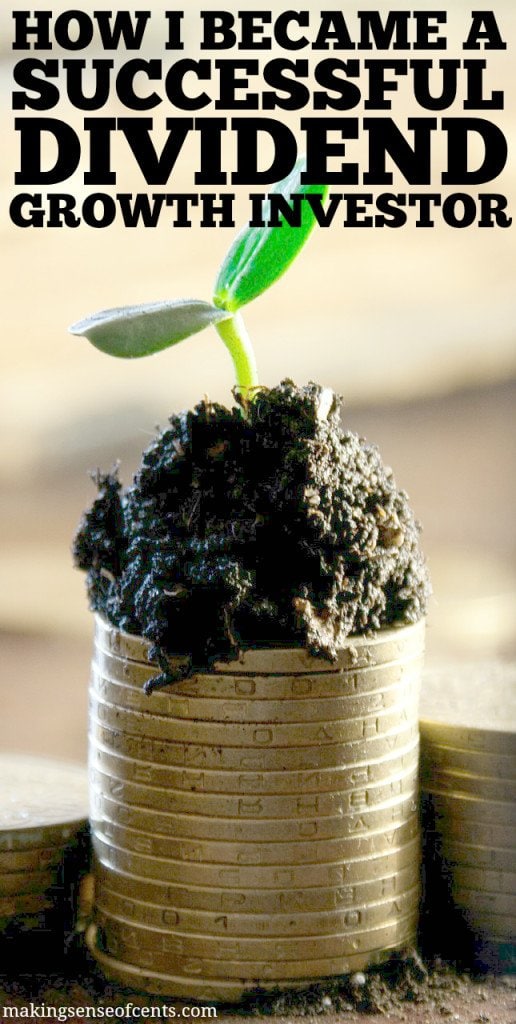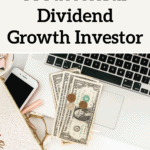 Hello! Dividend investing is a very interesting topic. Today, I have an expert who has appeared on Forbes, Motley Fool, MSN Money, TheStreet, and more, and he is going to share tons of great information on this subject. This is a post from Ben Reynolds at Sure Dividend, a dividend growth investor. Sure Dividend uses The 8 Rules of Dividend Investing to systematically build high quality dividend growth portfolios.
Hello! Dividend investing is a very interesting topic. Today, I have an expert who has appeared on Forbes, Motley Fool, MSN Money, TheStreet, and more, and he is going to share tons of great information on this subject. This is a post from Ben Reynolds at Sure Dividend, a dividend growth investor. Sure Dividend uses The 8 Rules of Dividend Investing to systematically build high quality dividend growth portfolios.
There are a seemingly endless amount of ways to invest. There are mutual funds, ETFs, growth stocks, value stocks, dividend stocks, preferred shares, options, bonds, currencies, commodities… This list goes on.
All of the options can be a bit overwhelming. Saving and investing is important, whether you are saving $100 a month, or pulling down $300,000+ a year and saving larger amounts.
As you might have guessed, I believe dividend growth investing is an excellent investment strategy for those looking to compound their wealth through time.
Related:
- What Are Dividends & How Do They Work? A Beginner’s Guide
- 12 Passive Income Ideas That Will Let You Enjoy Life More
The efficacy of dividend growth investing will be examined in detail in this article. First, I’d like to tell you a little bit about why I started Sure Dividend.
Sure Dividend was founded in March of 2014. I started Sure Dividend because I was frustrated with the high fees and lack of transparency that is prevalent in the investment industry.
The ‘normal’ investment approach is to talk to a financial advisor who will put your money into mutual funds that typically charge you 1% or more of assets under management.
1% doesn’t sound like much… But it is. The S&P 500 has averaged inflation adjusted compound returns of 6.8% a year over the long run. Paying 1% a year is giving up 14.7% of your returns.
That’s a high price to pay, but you get what you pay for, right? Unfortunately, that isn’t the case. Low cost funds have historically outperformed high cost funds regardless of asset class, on average. The more you pay, the worse you will do over time.
I started Sure Dividend to raise awareness about dividend growth investing. Buying and holding great businesses that pay you growing dividend income over time can be done without paying wall street (or your financial advisor) any management fees at all.
When you own individual securities, there is no fee to hold them.
Many investors get scared away from investing in individual securities because it seems complicated and confusing, but it doesn’t have to be.
Sure Dividend simplifies the process of investing in individual businesses with shareholder friendly managements that trade at fair or better prices.
My Journey To Become a Dividend Growth Investor
That’s the story of why I started Sure Dividend. The truth is, I wasn’t always a dividend growth investor.
I first caught the investing ‘bug’ in college. It wasn’t because I had a lot of money to invest – rather, it was extremely intellectually stimulating to me. I read everything I could about investing.
Value investing in particular was appealing to me. Value investing is the process of finding businesses you believe are trading for less than their worth. You invest in the businesses you perceive to be undervalued, and hold on until it reaches fair value.
Benjamin Graham is the father of value investing. The name is probably not familiar to those outside of the investing world. Benjamin Graham’s most famous pupil is much more well-known: Warren Buffett.
From Graham To Buffett
Warren Buffett has several excellent quotes that distill value investing to its essence. One of my favorites is below:
Price is what you pay. Value is what you get.
Benjamin Graham became a multi-millionaire from his value investments and investment fund that he managed. That’s amazing success.
Warren Buffett became a multi-billionaire (he’s now worth well over $60 billion) by tweaking Benjamin Graham’s value investing style.
Benjamin Graham preferred to invest in businesses that were trading below liquidation value. That means businesses that could sell everything they have and have enough cash left over to pay off all debt and buy back all shares and still have money left over. Businesses that get this cheap are usually pretty terrible businesses. Most of the time, they are losing money.
Warren Buffett tweaked Benjamin Graham’s style by applying a value-centered approach to great businesses.
It’s far better to buy a wonderful company at a fair price than a fair company at a wonderful price. – Warren Buffett
I’ve tossed around the phrase ‘great business’ a few times in this article… You might be wondering what that actually means.
A great business is a business with a strong and durable competitive advantage. A strong and durable competitive advantage is something that sets the business apart from its rivals and is likely to be in place for a long time. An excellent example is Coca-Cola’s (KO) brand equity. Anyone can make a brown sugary cola (think RC Cola or similar), but you can’t replicate Coca-Cola’s success because of the company’s strong brand-based competitive advantage.
Back To My Dividend Investing Growth Journey
Of course, I didn’t immediately ‘see the light’. I preferred the idea of buying a business worth $1.00 for $0.70. It sounds so easy.
But markets are very efficient. I had some successes, but also some failures. Above all else, value investing takes a lot of time.
This article makes it sound like I only studied and applied value investing, but that’s not the case.
I’ve also had a long interest in quantitative rule-based investment methodologies. From this led to a deep interest in optimal portfolio diversification and a wide range of ETF based strategies. The details of these are beyond the scope of this article.
I actually didn’t ‘convert’ to dividend growth investing until I began researching how to minimize investment costs.
Every time you buy or sell a security, you pay more than you’d think in the way of frictional costs. A list of frictional costs from buying and/or selling is below:
- Slippage
- Brokerage fees
- Bid-Ask spread
- Tax consequences
- Opportunity cost of wasted time
A study by Barber and Odean found that when individual investors sell a security and buy a new one, the new security underperforms. Individual investors tend to largely underperform the market in large part due to excessive trading.
The lesson is – don’t needlessly buy and sell securities. Once again, Warren Buffett says it best:
When we own portions of outstanding businesses with outstanding managements, our favorite holding period is forever.
One of the hidden benefits of buying and holding is that the money you would be paying in capital gains if you sold taxes (if you have a taxable account) is left to compound in the security in which you are invested. This is not often discussed, but it is very powerful. I believe this to be one of the primary reasons Buffett sells his core holdings so rarely.
Dividend growth investing is uniquely suited to buying and holding. Dividend growth stocks tend to pay you more dividends every year. The longer you hold, the higher your dividend income becomes. This disincentives you from selling – and being your own worst enemy.
The low-cost nature of dividend growth investing (due to very few frictional costs) is compelling. The historical record of dividend growth investing is even more compelling; that’s what really made me switch to being an advocate (and practitioner) of dividend growth investing.
The Evidence for Dividend Growth Investing
I’ve quoted Warren Buffett quite a bit in this article. Few people realize that Warren Buffett is primarily a dividend growth investor. Over 90% of his portfolio is invested in dividend paying stocks – and most of them have long dividend histories. Buffett’s amazing success is anecdotal evidence of the efficacy of dividend growth investing.
Here’s a very compelling reason to be a dividend growth investor. A study from 1972 through 2014 found the following compound total returns:
- Non-dividend stocks had compound total returns of 2.3% a year
- Dividend paying stocks had compound total returns of 9.2% a year
- Dividend growth stocks had compound total returns of 10.1% a year
Why have dividend stocks in general performed so well? I believe it is because a business must be generating actual income and be relatively sound to comfortably pay shareholders money every year. Businesses with a long record of paying rising dividends must be even better off – they can reward shareholders with ever higher income.
There is a select group of businesses that have increased their dividend payments for 25+ consecutive years in a row. This group of businesses is called the Dividend Aristocrats. There are currently 50 Dividend Aristocrats.
The Dividend Aristocrats Index is comprised of well-known high quality businesses like:
- Clorox (CLX)
- PepsiCo (PEP)
- Wal-Mart (WMT)
- Procter & Gamble (PG)
- Johnson & Johnson (JNJ)
The performance of the Dividend Aristocrats Index has been nothing short of phenomenal over the last decade. The Dividend Aristocrats index has averaged returns of 9.8% a year over the last decade – versus 6.4% a year for the S&P 500.
The Dividend Aristocrats Index has generated these market-beating returns with lower stock price volatility. The index’s stock price standard deviation over the last decade is 14.0%, versus 15.2% for the S&P 500. It is very rare to find an investment method that can outperform the market over long periods of time with lower stock price volatility.
The historical evidence of efficacy and low cost of implementing a dividend growth portfolio is what ultimately made me become a dividend growth investor.
Final Thoughts – Financial Freedom Through Passive Dividend Income
I hope you don’t read this post and get the idea that dividend growth investing is some sort of get rich quick scheme.
It is anything but that.
Dividend growth investing takes time. Over time, it will compound your wealth if you have the discipline to hold your high quality businesses and let their dividend income rise – and not sell during stock price declines.
You can reach financial independence with dividend growth investing. Once your dividend income covers all your bills and you are invested in businesses that will very likely pay you higher dividends every year, you are completely and truly financially independent.
Sure Dividend is more than just a business to me. I have 100% of my personal funds invested in dividend growth stocks. All of my personal holdings have ranked in the Top 20 or higher based on The 8 Rules of Dividend Investing at the time of their purchase. I believe dividend growth investing to be the most effective way for individual investors to compound their wealth over time – for myself, and for everyone else.
Are you interested in dividend investing and becoming a dividend growth investor? Why or why not?


Leave a Reply